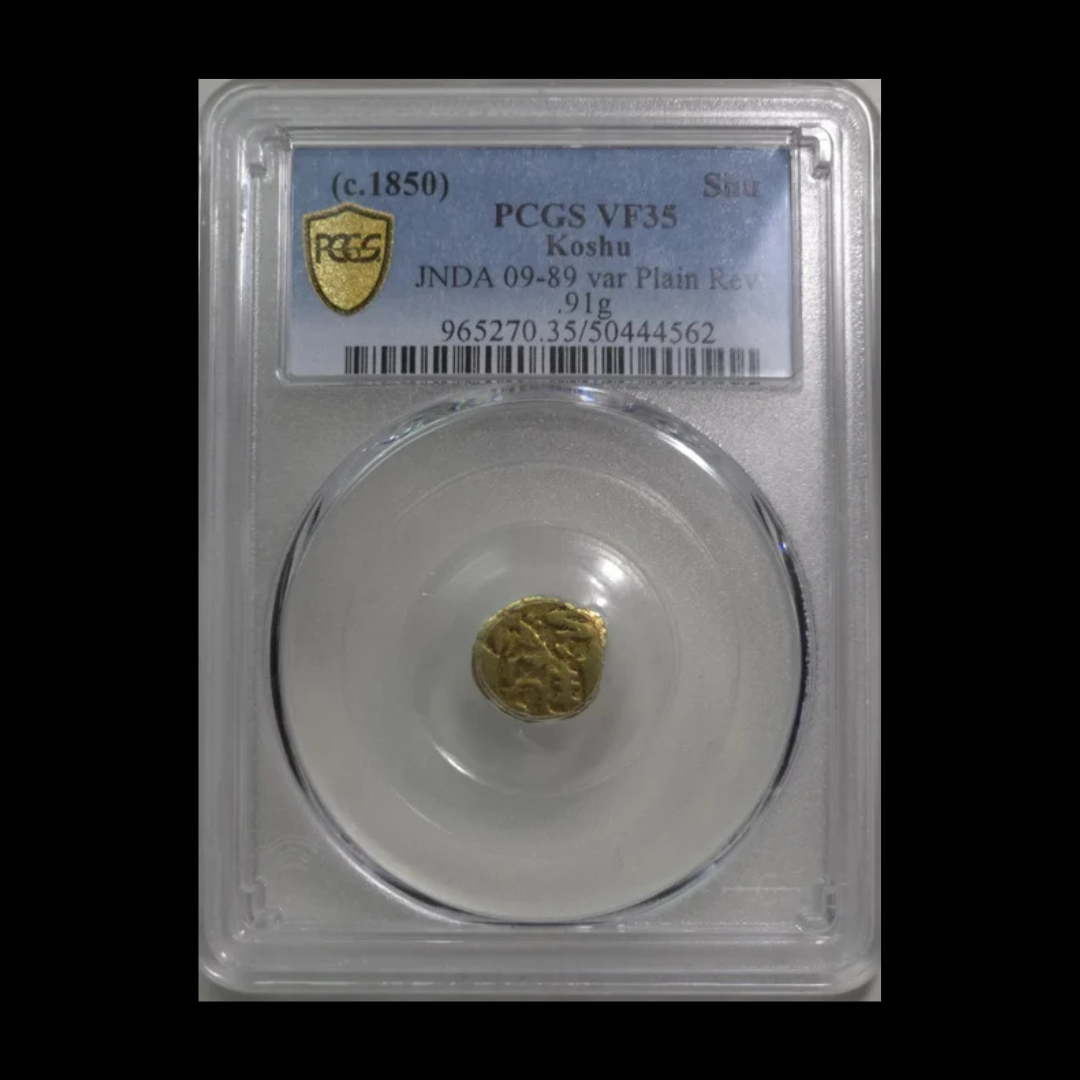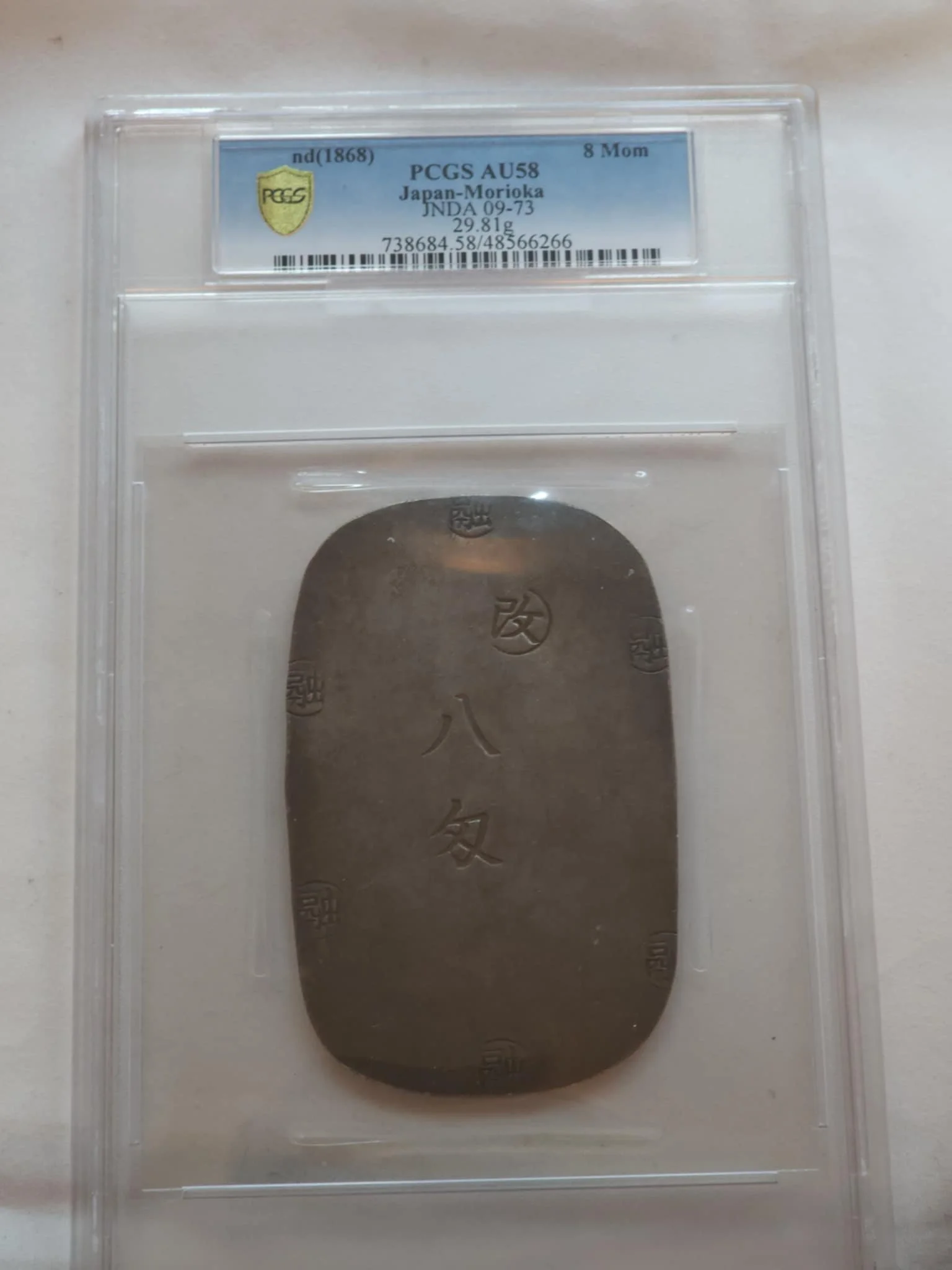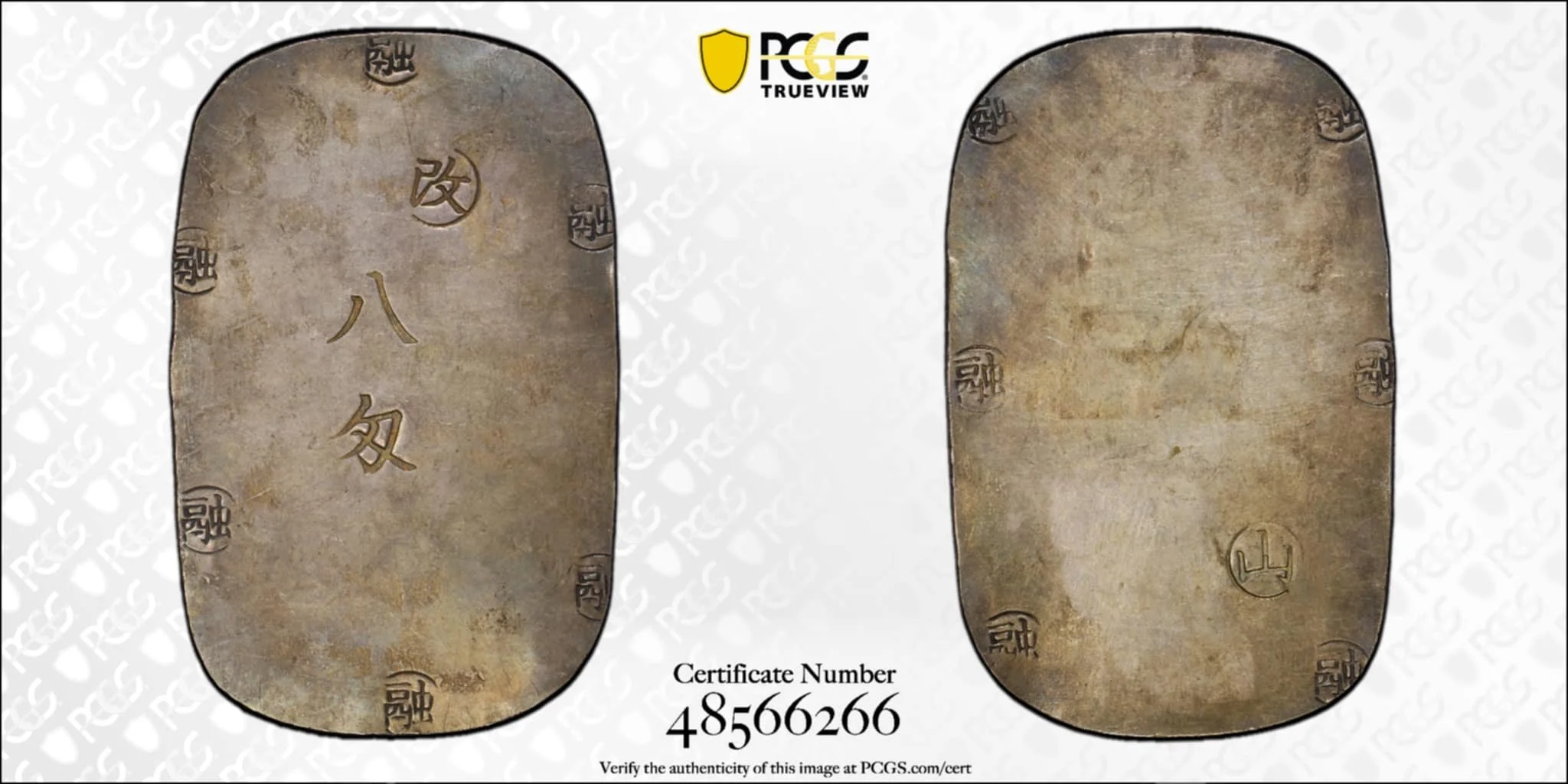 Image 1 of 3
Image 1 of 3

 Image 2 of 3
Image 2 of 3

 Image 3 of 3
Image 3 of 3




Japan — Bunsei Gold Koban (AD 1819–1828), JNDA 09-20, PCGS XF40, Ex. Robert Hesselgesser Collection (c. 195–200 years old)
Japan — 1819–1828 Bunsei Gold Koban (JNDA 09-20) — PCGS XF40
Ex. Robert Hesselgesser Collection
Struck during the Bunsei era (1819–1828) of the late Edo period, this gold koban represents one of the most iconic coin types in Japanese history. Handcrafted from high-purity gold, these oval coins were a symbol of wealth and prestige, circulating as the principal unit of large-scale commerce in Tokugawa Japan.
The obverse shows bold, well-preserved calligraphic inscriptions over the textured nanako surface, while the reverse retains crisp official kiri (Paulownia) crest and hallmark punches. Evenly worn, with attractive golden hues and a warm, original patina, this piece grades PCGS XF40 — well above the typical surviving quality.
Adding to its desirability is its pedigree to the Robert Hesselgesser Collection, one of the finest private holdings of Japanese coinage ever assembled. A superb example of pre-modern Japanese gold coinage, combining historical significance, artistic elegance, and proven provenance
Japan — 1819–1828 Bunsei Gold Koban (JNDA 09-20) — PCGS XF40
Ex. Robert Hesselgesser Collection
Struck during the Bunsei era (1819–1828) of the late Edo period, this gold koban represents one of the most iconic coin types in Japanese history. Handcrafted from high-purity gold, these oval coins were a symbol of wealth and prestige, circulating as the principal unit of large-scale commerce in Tokugawa Japan.
The obverse shows bold, well-preserved calligraphic inscriptions over the textured nanako surface, while the reverse retains crisp official kiri (Paulownia) crest and hallmark punches. Evenly worn, with attractive golden hues and a warm, original patina, this piece grades PCGS XF40 — well above the typical surviving quality.
Adding to its desirability is its pedigree to the Robert Hesselgesser Collection, one of the finest private holdings of Japanese coinage ever assembled. A superb example of pre-modern Japanese gold coinage, combining historical significance, artistic elegance, and proven provenance



















